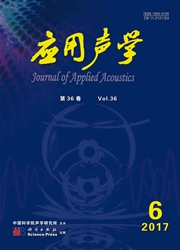

 中文摘要:
中文摘要:
声扩散设计对厅堂音质的影响缺乏定量描述。以海南大学音乐厅的声学设计为例,运用快速多极子边界元法(FMBEM)对声扩散的影响进行定量分析,在侧墙使用一维伪随机序列结合视觉艺术效果优化其散射性能,在后墙直接采用二维伪随机序列生成立体的扩散结构,解决了音乐厅平面选型带来的声学缺陷问题。数值模拟及现场测量显示,在采用扇形与矩形结合平面的小音乐厅中,声扩散设计比平面更有优势,使该音乐厅的中前场及中间位置获得足够的侧向反射声能,使厅堂各区域的音质参量取值落在推荐的范围之内。
 英文摘要:
英文摘要:
There is little quantitative description about the effect of diffusion design on auditorium acoustics.In the design of Hainan university concert hall, fast muhipole boundary element method ( FMBEM ) was used to analyze quantitatively the sound diffusion field.Scattering lateral surfaces basing on one-dimension pseudorandom sequence and combining the visual art effect was designed, while the back wall was equipped with two large diffusers basing on two-dimension pseudorandom sequence.These two kinds of scattering structure effectively solved the acoustical defects induced by the adverse plan design. Numerical modeling and in-situ measures demonstrated that diffusion design had advantage to provide abundant lateral reflection to the front rows and middle area of this fan-shape concert hall, and ensured the key acoustical parameters were in the suitable accepted range.
 同期刊论文项目
同期刊论文项目
 同项目期刊论文
同项目期刊论文
 期刊信息
期刊信息
